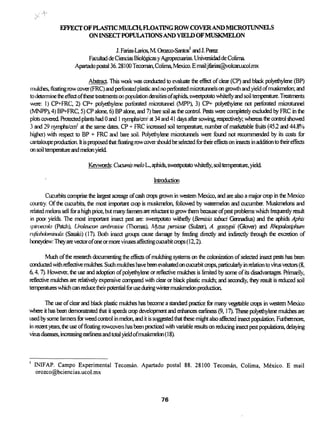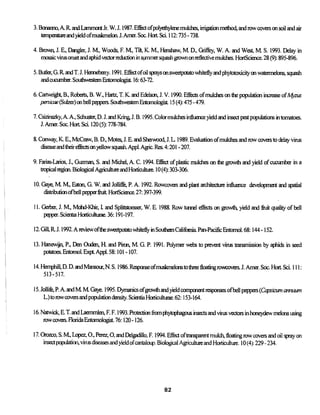This study evaluated the effects of various treatments, including clear and black polyethylene mulches combined with floating row covers and microtunnels, on the growth and yield of muskmelon while monitoring pest populations. Results indicated that the combination of clear polyethylene mulch and floating row covers significantly increased soil temperature and marketable fruit yield while effectively reducing aphid and whitefly populations. It was concluded that floating row covers should be prioritized for managing insect pests and enhancing muskmelon production in tropical conditions.







